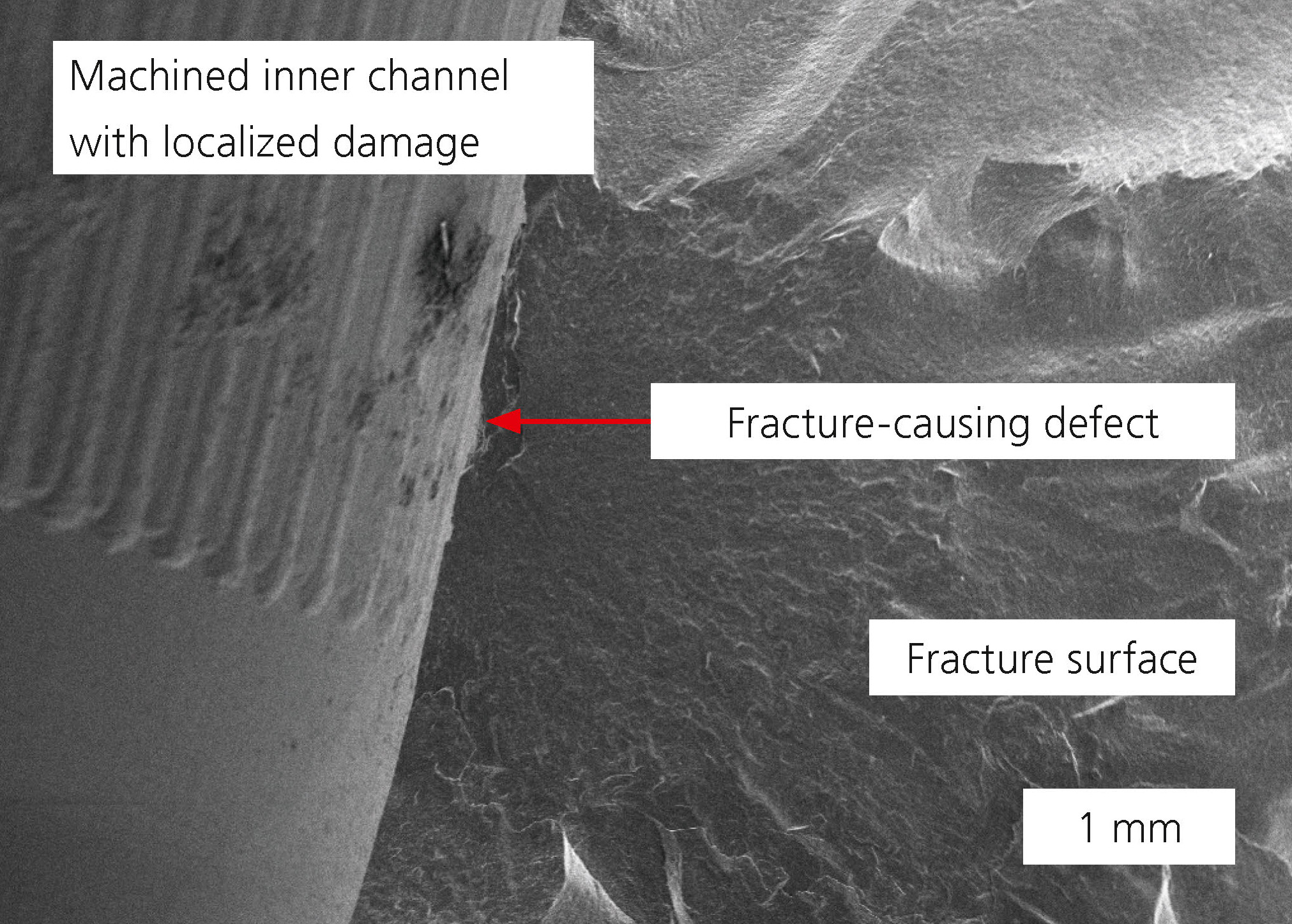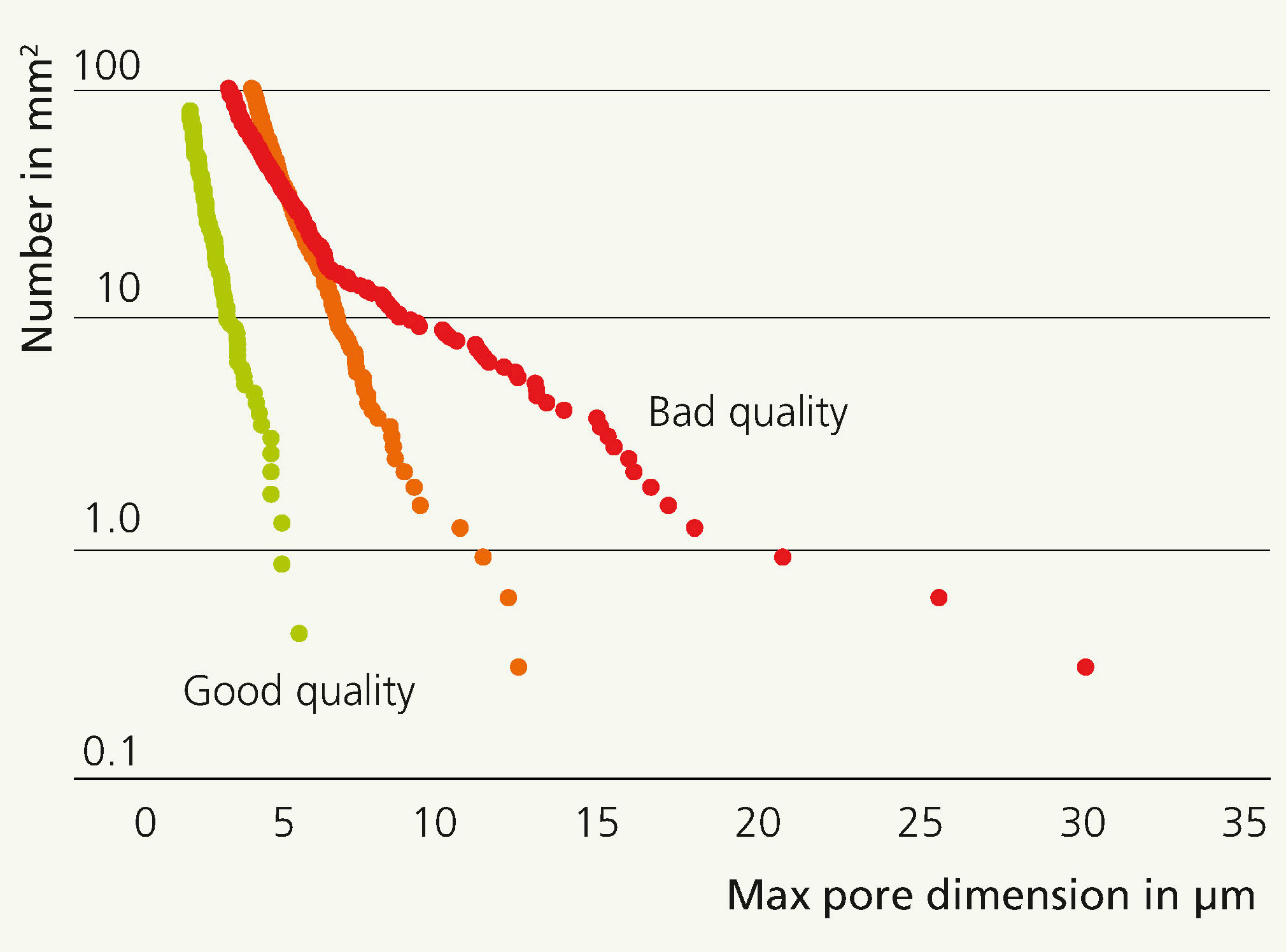
Systematic failure analysis of ceramic components
Current research



Systematic failure analysis is used to understand the failure of systems (e.g. the collapse of the Aquadome in Berlin, train accidents in Eschede or Garmisch-Partenkirchen) and then make them safer. Applied to ceramic components it can help to detect weak points in production or design and make appropriate adjustments or establish quality assurance measures (including non-destructive testing). In addition, the analysis can also be used to optimize materials for the required demands or to select suitable materials.
Fraunhofer IKTS has many years of experience in analyzing the causes of failure of ceramic components. This expertise is based on materials know-how on the one hand and the sophisticated analytical capabilities on the other, which benefit both the development of materials and components and the prevention of downtimes in industry.
Particularly in the case of mechanical, thermomechanical, corrosive or even electrical stress, the fractographic examination of the fracture surfaces is an essential tool for determining or narrowing down the cause of failure. Figure 1 shows a rasterelectronic image of the fracture surface of a SiC component with an internal channel that was used under chemical/thermal stresses. The analysis has shown that the primary cause of failure was not chemical corrosion, but defects caused by surface processing that reduced the strength level – a cause that could subsequently be avoided through optimized processing.
Sometimes it is necessary to clarify why increased failure rates occur in different material batches. In this case, in addition to the actual defect analysis, a systematic, statistically verified microstructure analysis is often necessary to determine the relative frequency of the identified defects and thus to be able to verify the differences in the batches. Relevant defects are often like the proverbial “needle in the haystack”. To find them, large areas must be reliably analyzed.
To achieve this, distributions normalized on the measurement area are suitable approach, as these reflect the frequency of defects in the volume. An example can be seen in Figure 2. It shows the pore distribution in rolling elements from three different batches, with one batch exhibiting inadequate tribological behavior.
Only by analyzing an area of several square millimeters in size can a reliable distinction be made between the qualities.
Fraunhofer IKTS offers damage analysis of ceramic components and works with partners to develop prevention strategies through adaptations in technology, materials or design or by introducing quality assurance measures (e.g. non-destructive testing).